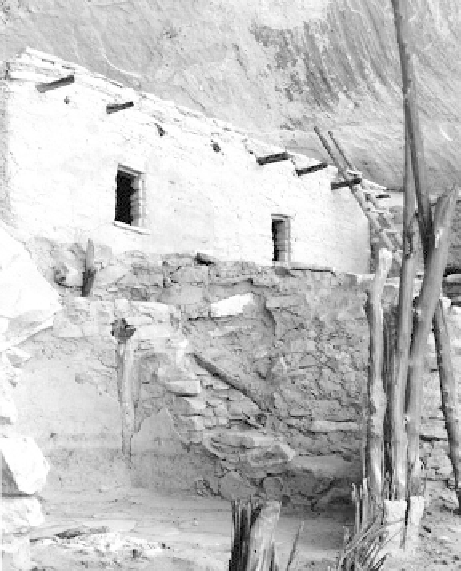Geoscience Reference
In-Depth Information
consider examples from the historic, colonial, and prehispanic eras. The climate and
social associations witnessed during the modern and historic eras provide a proof of
concept for the possible role of climatic extremes in selected social changes in pre-
history. Further documentary and archaeological research will be needed to help
test these climatic hypotheses of social change during the historic, colonial, and
prehispanic eras.
10.2 Tree-Ring Analyses of Climate Extremes
and Human Impacts
A.E. Douglass pioneered the use of proxy climate data from tree rings to study
cultural change. Douglass documented severe multiyear drought over the Colorado
Plateau dating from AD 1276 to 1299 and speculated on the hardships such an
extended dry spell must have had on the Anasazi ancestors of the modern Pueblo
chronology for the Southwest was based on living trees and wood and charcoal
logical link between the living tree record and the archaeological time series
was complicated by the prehistoric migration of people and the abandonment of
Fig. 10.4
Rooms 44, 45, and
74 (rear
right
, rear
left
,and
foreground
, respectively) at
Keet Seel in northeastern
Arizona, one of many
Southwestern sites abandoned
during Douglass' Great
Drought (AD 1276-1299).
Room 74 is an annex to the
adjacent kiva (a ceremonial
structure). Grooved door
jambs identify Rooms 44 and
45 as granaries built in 1275
to store food against future

